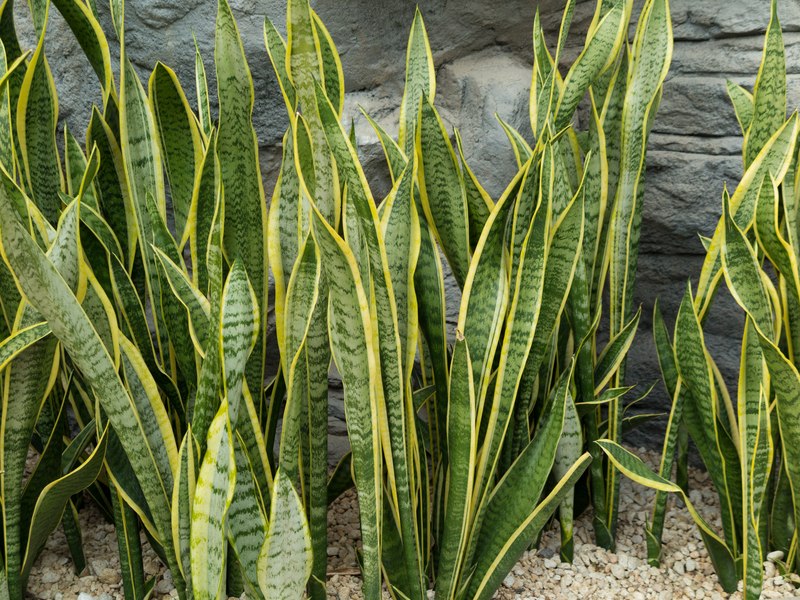Maintaining Your Garden's Health in Adverse Weather
Posted on 18/09/2025
Maintaining Your Garden's Health in Adverse Weather
Gardening is a beloved pastime for many, but maintaining your garden's health in adverse weather can challenge even experienced gardeners. With unpredictable patterns--from scorching heatwaves and drought to torrential rains and sudden frosts--plants and soil need extra care. In this comprehensive guide, we will explore a wide range of actionable strategies, essential tips, and best practices to keep your garden thriving, no matter the weather.
Why Is Adverse Weather Challenging for Gardens?
Adverse weather can disrupt the delicate balance of a garden's ecosystem. Drought can leave plants parched and soil depleted, while excessive rainfall can drown roots and encourage disease. Meanwhile, strong winds and unexpected frosts can physically damage plants or stunt their growth. Understanding these challenges is the first step toward protecting your garden's health.
- Drought: Causes water stress, wilting, and reduced crop yield.
- Heavy Rain: Leads to waterlogging, root rot, and nutrient leaching.
- Frost: Damages plant cells, resulting in browning and dieback.
- Wind: Breaks stems, strips leaves, and dries out the soil rapidly.

Essential Tips for Maintaining Your Garden During Adverse Weather
Utilizing several proactive garden care techniques can make a significant difference. Let's delve into specific approaches tailored to different weather extremes to ensure robust, lush plants all year long.
1. Managing Your Garden's Health During Drought
Drought is among the harshest conditions for gardeners. However, certain steps can help in preserving plant health and maintaining your garden even when water is scarce.
- Mulching: Applying a thick mulch of organic material conserves soil moisture, regulates temperature, and suppresses weeds that compete for water.
- Water Early or Late: Water your garden early in the morning or in the evening to minimize evaporation and boost water absorption.
- Use Drip Irrigation: Drip lines or soaker hoses deliver water directly to the root zones, reducing waste and evaporation.
- Group Similar Plants: Cluster plants with similar water needs together for more efficient watering.
- Choose Drought-Tolerant Plants: Opt for native and drought-resistant varieties that are naturally adapted to your region's climate.
For more drought period strategies, see our detailed guide on choosing drought-tolerant plants.
2. Protecting Your Garden from Heavy Rain & Flooding
While rain brings much-needed hydration, excessive rainfall can suffocate roots, promote fungal diseases, and wash away topsoil. To maintain healthy plants in heavy rain, consider these methods:
- Improve Drainage: Elevate garden beds, add sand or organic matter to soil, and ensure downspouts direct water away.
- Use Raised Beds: Raised beds keep roots above saturated ground and improve air circulation.
- Monitor for Disease: Keep an eye out for fungal issues like powdery mildew or root rot after rain, and remove any affected plant material.
- Apply Mulch: While mulch retains moisture during drought, it also minimizes soil compaction and erosion during heavy rains.
- Avoid Walking on Wet Soil: Compacted, wet soil can smother roots--wait until it dries before tending to your beds.
3. Shielding Your Garden from Frost and Cold Weather
Sudden cold snaps or frost can severely damage sensitive plants, reducing bloom and fruit production. Maintaining garden health in cold weather hinges on preparation and timely action:
- Use Covers and Cloches: Employ garden fabric, fleece, or plastic covers on cold nights to trap warmth around plants.
- Move Pots Indoors: Transfer portable containers to a sheltered area or indoors during frosts.
- Mulch Heavily: Mulch acts as insulation, protecting roots from freezing temperatures.
- Water Before Frost: Moist soil retains more heat than dry soil, so water in the morning before low temps are expected.
- Prune Smartly:
Wait to prune frost-damaged plants until spring to avoid further exposure and stress.
4. Safeguarding Against Wind Damage
Strong winds have the potential to break stems, tear leaves, and uproot young plants. Here's how to maintain a resilient garden during stormy weather:
- Stakes and Supports: Secure tall or top-heavy plants using stakes, cages, or trellises.
- Establish Windbreaks: Plant hedges or install fencing as a barrier to block and dissipate wind.
- Flexible Plant Ties: Use soft ties that move with the wind, preventing stems from snapping.
- Trim Dead or Weak Growth: Remove any damaged branches to reduce wind resistance and prevent further harm.
- Choose Sheltered Planting Sites: When possible, place the most sensitive varieties in naturally protected locations.
Choosing Resilient Plants for Challenging Weather
Investing in plants that can withstand weather extremes is crucial. Native, well-adapted species generally have higher survival rates and need less maintenance during tough times. Here are factors to consider for weather-tolerant plant selection:
- Native Varieties: Plants indigenous to your region are naturally acclimated to local weather.
- Deep Root Systems: Species with deeper roots access water and nutrients efficiently, improving their drought and wind resistance.
- Thick, Waxy Leaves: Plants with waxy or fuzzy foliage transpire less and are better equipped for drought.
- Cold-Hardy Species: Select perennials that survive winter freezes such as hellebores, sedum, and coneflowers.
Plant breeders and nurseries frequently label plants as drought-tolerant, flood-resistant, or frost-hardy--consult an expert before planting.
Improving Soil Health: Foundation for All Weather Conditions
Healthy soil is the backbone of a resilient, thriving garden. To maintain garden vitality in adverse weather, pay attention to your soil's structure, fertility, and water retention:
- Add Organic Matter: Compost, leaf mold, and manure improve soil texture, fertility, and its ability to hold water or drain excess.
- Practice Crop Rotation: Rotating your vegetables year-to-year prevents soil-borne diseases and nutrient depletion, maintaining garden productivity.
- Cover Crops: Plants like clover, vetch, or rye protect soil from erosion and boost nitrogen levels.
- Test and Amend Soil: Regular soil testing allows you to adjust pH and nutrient levels before weather stress hits.
Mulching: A Gardener's Best Friend
Whether facing drought, flood, or frost, mulch provides multiple benefits:
- Reduces water evaporation during hot or windy spells
- Insulates roots from cold
- Suppresses weeds that compete for water and nutrients
- Prevents erosion and compaction in heavy rain
Effective Water Management: Conserving and Directing Water
With climate uncertainty, smart water management is vital. Adopt these strategies to maintain your garden's health in unpredictable weather:
- Rainwater Harvesting: Collect roof runoff in barrels for use during dry spells--it's eco-friendly and reduces water costs.
- Efficient Irrigation: Water deeply but less frequently so roots grow deeper and stronger.
- Avoid Overwatering: Too much water is as damaging as too little. Check soil moisture before irrigating.
- Direct Water Flow: Use contours or swales to guide storm water away from vulnerable plants and structures.
Pest and Disease Control During Stressful Weather
Unstable weather can weaken plants and favor outbreaks of pests and diseases. Practical actions for maintaining your garden under weather stress include:
- Scout Regularly: Check for pests and diseases every few days, especially after major weather events.
- Encourage Beneficial Insects: Attract natural predators like ladybugs, lacewings, and birds to help control harmful insects.
- Remove Debris: Clean up fallen leaves, dead stems, and disease-infected material to reduce sources of infection.
- Rotate Sprays: If using organic sprays, rotate products to prevent resistance and protect beneficials.
Integrated Pest Management (IPM)
Implementing Integrated Pest Management strategies combines cultural, mechanical, biological, and chemical controls to minimize pest impact with minimal environmental disruption.

Planning and Preparation: The Key to Garden Resilience
*Preparation is the best defense against extreme conditions.* Plan for climate fluctuations as you design and maintain your garden:
- Choose the Right Location: Position gardens where they receive appropriate sun, shelter, and drainage.
- Plant in Successions: Stagger plantings to spread out risk; damage to one batch won't ruin the entire harvest.
- Install Emergency Protection: Keep protective materials handy--tarps, frost blankets, and plant stakes--for quick response.
- Monitor Weather Reports: Sign up for local alerts and set up a weather station at home for microclimate accuracy.
- Keep Records: Note which plants survive and thrive through different seasons, informing future choices.
Conclusion: Sustaining Garden Health Amidst Weather Extremes
Maintaining your garden's health in adverse weather is undoubtedly a challenge, but with patience, observation, and the right strategies, your garden can remain lush and productive. By focusing on resilient plant choices, soil health, efficient watering, and timely protection, you'll weather each storm--and drought--with confidence. Adaptation and continuous learning will make your garden more robust against whatever nature brings next.
Stay proactive, nurture your soil, and always prepare for the unexpected--your garden's vitality depends on it!

